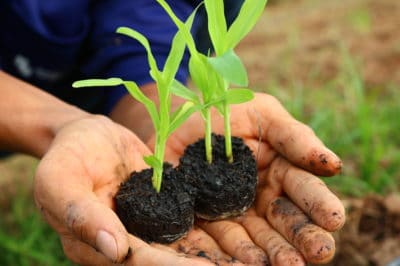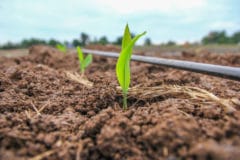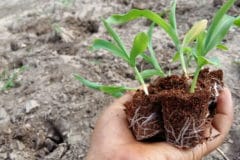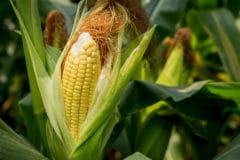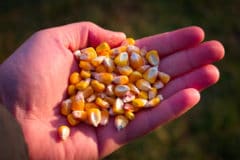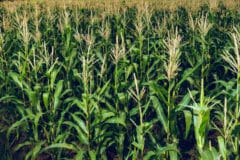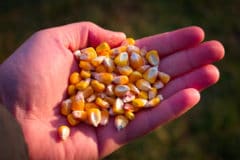Why Transplant Corn?
One of the main reasons you might want to transplant corn is to extend your growing season. If you live in a geographical area with an abbreviated growing season, you may not be able to plant corn with any success. Even early-ripening sweet corn varieties may not fully ripen if you do not have optimal weather.
The ideal soil temperature in which to plant corn seeds is approximately 60°F (16°C), so if you live in an area with colder springs and short growing season, transplanting corn is the best way to have a crop.
How to Transplant Corn
If you plan on starting your corn seeds indoors for later planting outdoors, there are a few important things to remember.
- Start corn seeds no earlier than four weeks before planting outdoors.
- Use biodegradable peat pots to disturb the roots as little as possible.
- Plant two corn seeds per peat pot to improve the yield of your corn crop.
- Keep the peat pots covered with plastic wrap and keep the soil moist until the seeds germinate.
Tip: If you have reusable greenhouse trays, they are the ideal environment for starting your corn seeds. Once the seeds have sprouted and have developed a set of leaves, you can remove the transparent plastic cover and leave the pots in the tray until time to plant.
When to Place Your Corn Plants Outdoors
As long as you have taken care of your young corn plants correctly, you should be able to move the seedlings outdoors in as few as 18-20 days. Keep in mind that corn requires warm soil and air temperatures, so move the plants outdoors when the weather is consistently warm. Additionally, be sure to have a row cover handy in case the temperature plummets unexpectedly.
Once you have planted the corn plants, raising your corn crop is the same as if you planted the seeds directly into the ground. Provided you give the seedlings adequate nutrition and water, you should have an abundant harvest.
